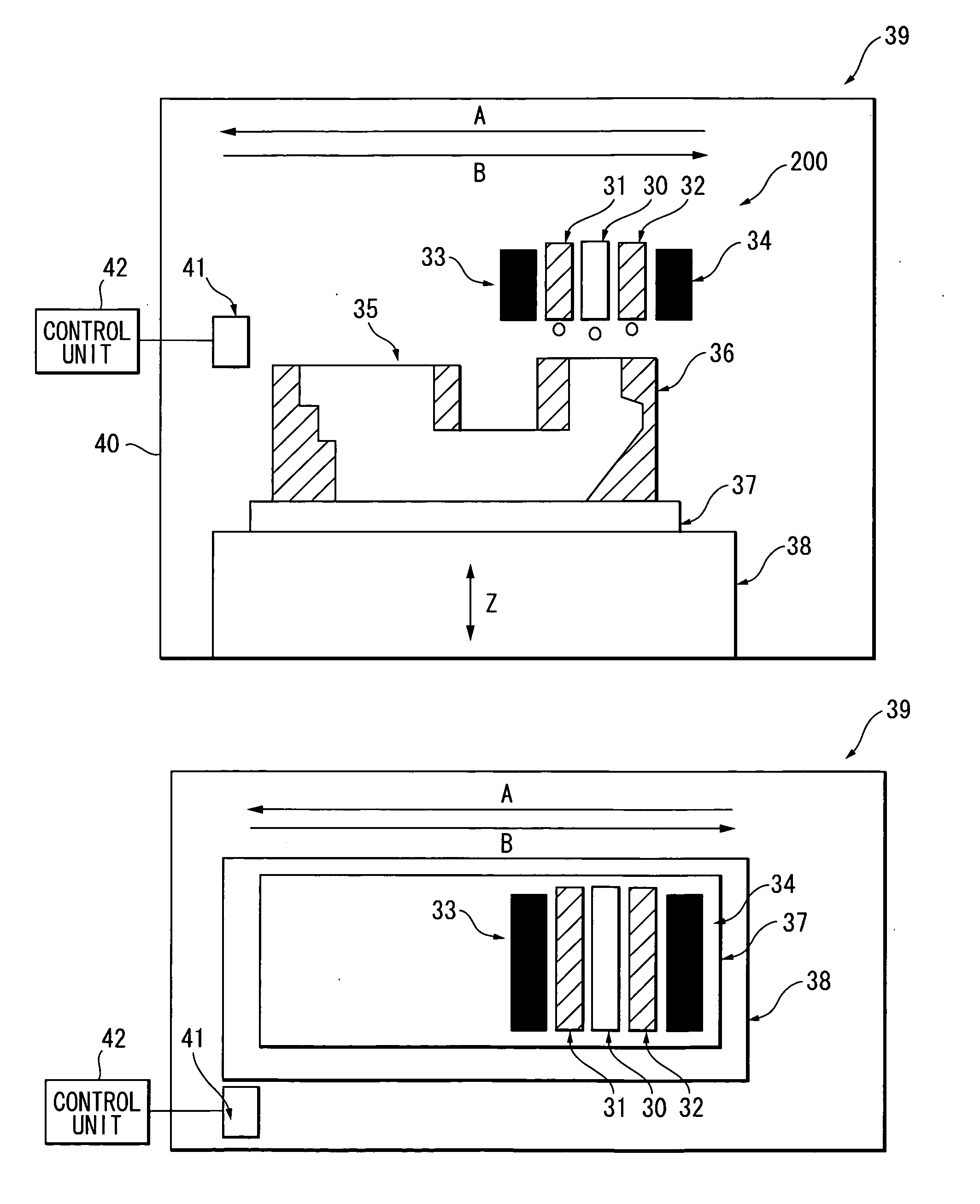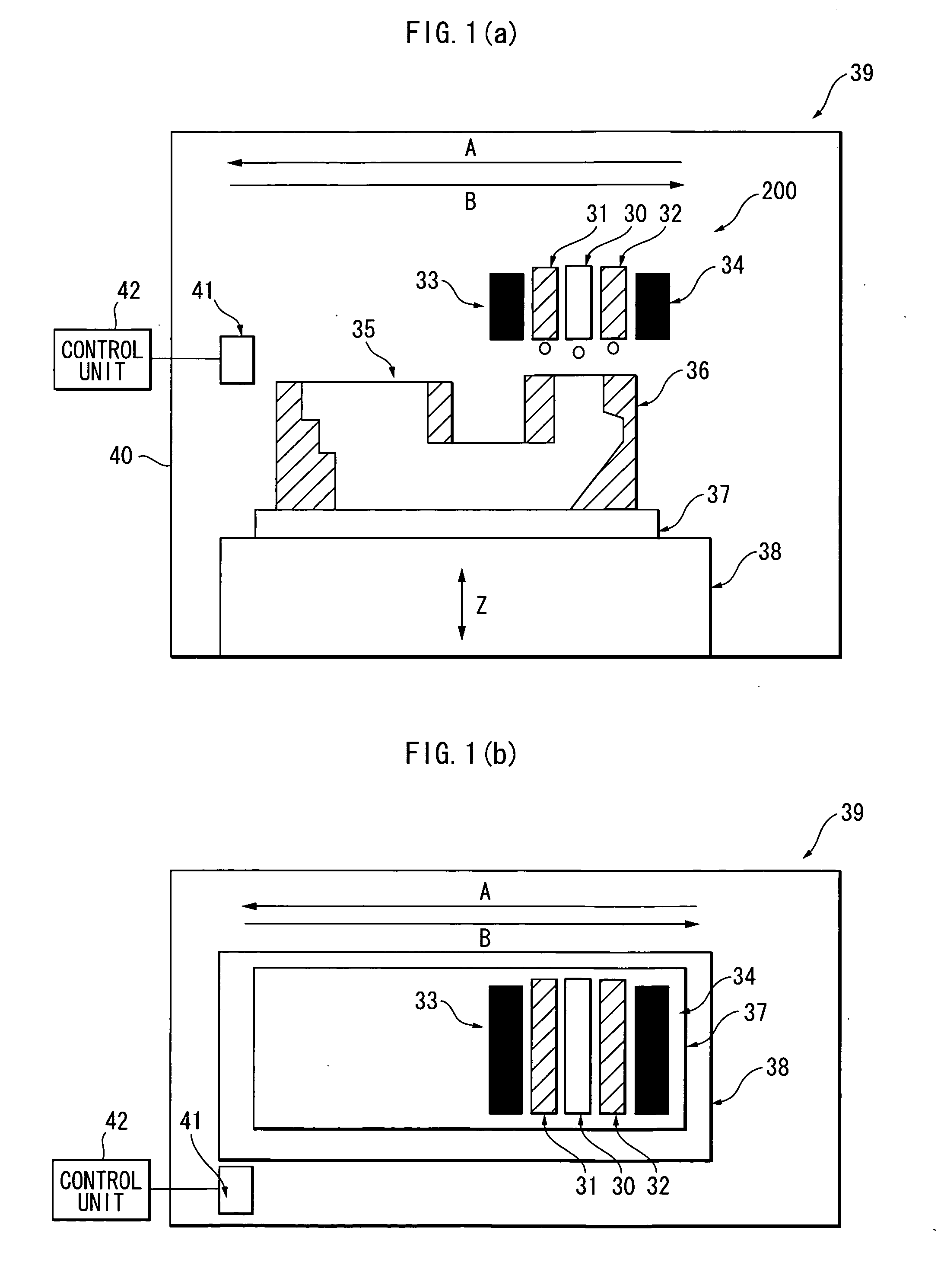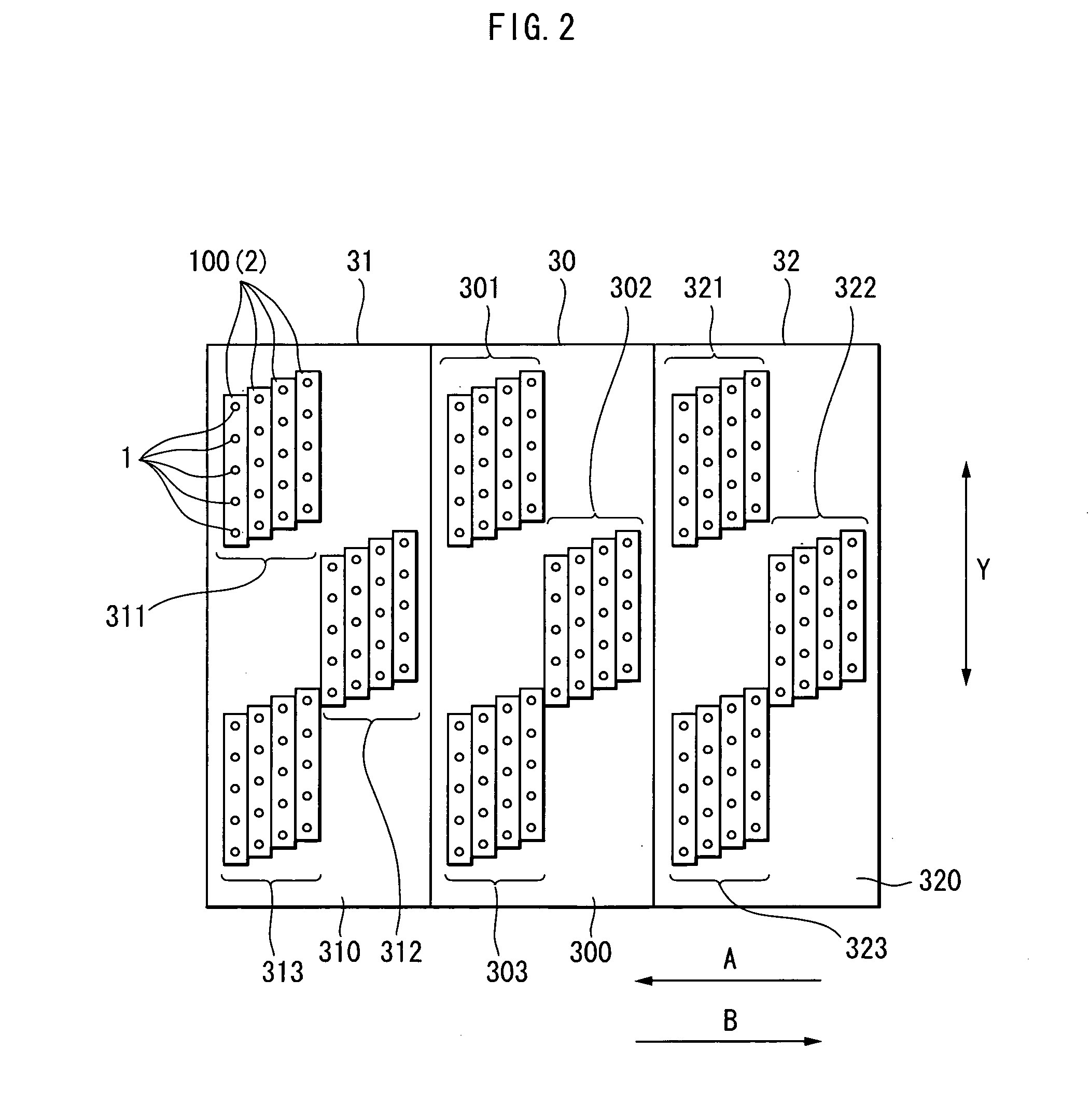Three-dimensional laminating molding device
a three-dimensional laminating and molding technology, applied in auxillary shaping apparatus, butter production, printing, etc., can solve the problems of not being able to form long beam shapes, floating island shapes, and long beam shapes such as letters h crossbars, and achieve high speed
- Summary
- Abstract
- Description
- Claims
- Application Information
AI Technical Summary
Benefits of technology
Problems solved by technology
Method used
Image
Examples
experiment 1
[0062]A total of 300 g containing 10 parts by weight of urethane acrylate (trade name: DIABEAM UK6038, available from Mitsubishi Rayon Co., Ltd.) and 90 parts by weight of neopentyl glycol hydroxypivalate ester di(meth)acrylate (trade name: KAYARAD MANDA, available from Nippon Kayaku Co., Ltd.) as a mold material, 3 parts by weight of a photo-polymerization initiator (trade name: IRGACURE 1700, available from Ciba Specialty Chemicals), and 2 parts by weight of a blue pigment (trade name: Lionel Blue 7400G, available from TOYO INK MFG. CO., LTD.) as a colorant was dispersed until a uniform mixture was obtained using a homogenizer (trade name: HG30, manufactured by Hitachi Koki Co., Ltd.) at a stirring speed of 2,000 rpm. Successively, the resultant mixture was passed through a filter to remove impurities or the like, thereby obtaining a uniform ink composition for mold. The viscosity of the ink was 9.5 mPa·s, and the surface tension of the ink was 32.5 mN / m. The viscosity of the ink ...
experiment 2
[0065]Using the same mold material and support material as that used in the experiment 1, a mold was produced while controlling the inner temperature of the molding device 39A to 70° C. and curing the mold material by irradiating the mold material with 250 mJ / cm2 of light using the ultraviolet-ray irradiation devices 33, 34 (SP5-250 DB, manufactured by Ushio Inc.). The formed mold had no warp or partial deformation, and had a smooth surface.
experiment 3
[0066]Using the same mold material and support material as that used in the experiment 1, a mold was formed while controlling the inner temperature of the molding device 39A to 45° C. and curing the mold material by irradiating the mold material with 350 mJ / cm2 of light using the ultraviolet-ray irradiation devices 33, 34 (SP5-250 DB, manufactured by Ushio Inc.). The formed mold had no warp or partial deformation. However, the surface slightly lacked smoothness.
PUM
| Property | Measurement | Unit |
|---|---|---|
| temperature | aaaaa | aaaaa |
| temperature | aaaaa | aaaaa |
| size | aaaaa | aaaaa |
Abstract
Description
Claims
Application Information
 Login to View More
Login to View More - R&D
- Intellectual Property
- Life Sciences
- Materials
- Tech Scout
- Unparalleled Data Quality
- Higher Quality Content
- 60% Fewer Hallucinations
Browse by: Latest US Patents, China's latest patents, Technical Efficacy Thesaurus, Application Domain, Technology Topic, Popular Technical Reports.
© 2025 PatSnap. All rights reserved.Legal|Privacy policy|Modern Slavery Act Transparency Statement|Sitemap|About US| Contact US: help@patsnap.com



